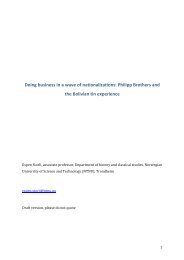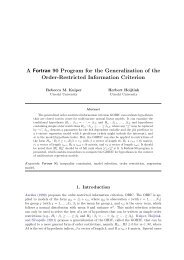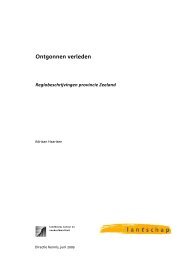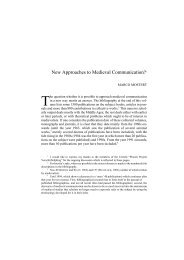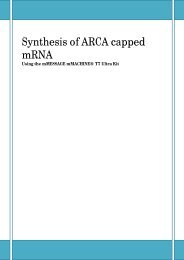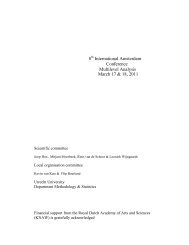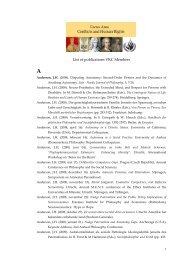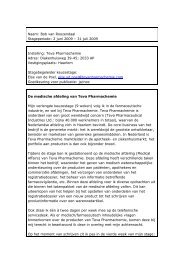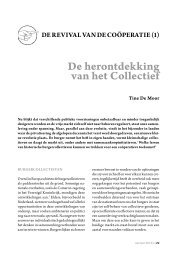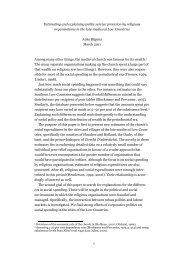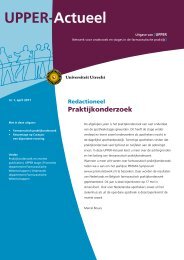CH8.Ewout Frankema.education.pdf
CH8.Ewout Frankema.education.pdf
CH8.Ewout Frankema.education.pdf
- No tags were found...
You also want an ePaper? Increase the reach of your titles
YUMPU automatically turns print PDFs into web optimized ePapers that Google loves.
a strong, religiously motivated, spirit to endure. Colonial bureaucracies worked in adifferent way and this is one of the reasons why enrolment rates in the Dutch EastIndies grew at a slower pace, despite the much longer tradition of supplying formal<strong>education</strong>. Bureaucracies are designed to control, to work within delineated budgets anddirectives and, not unimportant, bureaucracies do not compete for converts. In theDutch East Indies the teachers of the desa-schools had to fulfill a number of teacherqualifications in order to be liable to a state salary. Teacher training schools (dekweekscholen) gradually expanded, but the pool of qualified students remained small.Moreover, the state had to provide official permission for the establishment of a newschool if it was to receive state subsidies to pay for qualified and salaries teachers. Therequired investments, inspections and feedback procedures took time. This alsosuggests, however, that the quality standards in the public <strong>education</strong> sector in Indonesiawere higher than in the Congo. Is there any evidence for this hypothesis?5. The role of quality standards in <strong>education</strong>When investigating the comparative development of <strong>education</strong> in the Congo andIndonesia one is immediately confronted with the great differences in the collection of<strong>education</strong> statistics. Since the late 19 th century the Dutch colonial government recordedthe number of schools, the type of schools, the number of students in school per gradeand the percentage of children that left school with a certificate. This percentage wasextremely low in the late 19 th century but improved quickly as more children continuedtheir career into the third grade (Hartgerink, 1942: pp. 88-89, 136-137). These statisticsalso reveal that the desa-schools on Java and Madura performed significantly better thanin the Outer Areas. Yet, the simple fact that this information was collected on a centrallevel indicates the degree of control that was exercised on quality improvement. Themission schools in the Congo enjoyed a much larger degree of freedom because therewas no central authority imposing and monitoring prescribed curricular standards.The population census executed in respectively 1961 (Indonesia) and 1962 (Congo)suggests that the <strong>education</strong> system in Indonesia was more effective in raising literacyrates, despite the fact that the proportion of school-age children enrolled in the Congobetween 1920 and 1950 was considerably higher. In Indonesia the literacy rate of thepopulation aged 15+ was 42.9 against 31.3 in the Congo (UNESCO, 1965). The genderdistribution was highly unequal in both countries: 57.2 (M) versus 29.6 (F) in Indonesiaand 49.0 (M) versus 14.0 (F) in the Congo. The literacy rates of consecutive Indonesianage cohorts reveal a steady improvement since the first decade of the 20 th century. Tenyear age cohorts which had reached the age of 15 in respectively the 1910s, 1920s and1930s showed an increase in literacy rates of respectively 5.1, 6.7 and 10.8 compared tothe preceding age cohort. After the 1940s these rates improved even faster. The cohortof children attending primary school during the 1950s had a literacy rate in 1961 of72.1% with a more egalitarian gender distribution.A comparison of government expenditure patterns provides further insight in possiblequality differences. Between 1900 and 1940 the Dutch government gradually increasedits investments in <strong>education</strong> from 2 to 5% of the total expenditure budget. From a globalcomparative perspective this share was far from impressive (<strong>Frankema</strong>, 2011), but it11



